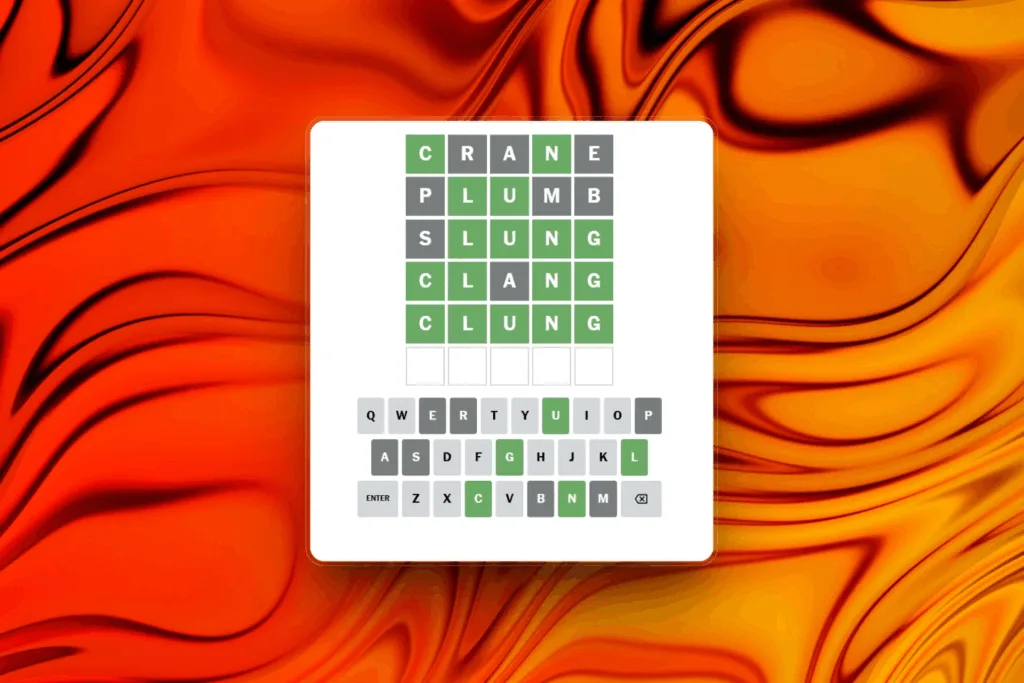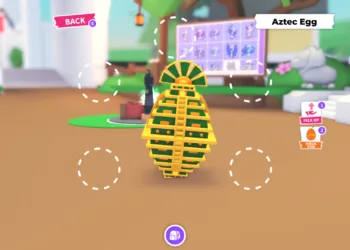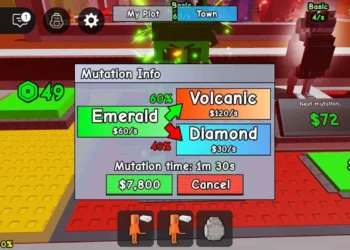Struggling with today’s Wordle puzzle? You’re not alone! Wordle #1610 for November 15, 2025 brought a consonant-heavy challenge that has players scratching their heads. Whether you need subtle hints or the complete answer, this guide has you covered without spoiling your fun.
Table of Contents
Wordle #1610 Quick Facts
| Puzzle Details | Information |
|---|---|
| Puzzle Number | #1610 |
| Date | November 15, 2025 |
| Difficulty | Medium |
| Vowels | 1 (U) |
| Repeated Letters | None |
| Word Type | Verb (Past Tense) |
| Starting Letter | C |
| Ending Letter | G |
Strategic Hints (No Spoilers!)

Hint 1: Letter Composition
The word contains only one vowel and features four consonants. The single vowel appears in the middle position, making it trickier to identify early in your guessing sequence.
Hint 2: What Does It Mean?
The word means to hold on tightly to something or someone, especially by embracing. Think about actions involving grip or attachment during moments of fear, support, or affection.
Hint 3: Word Structure
The word starts with the letter C and contains the letter N. It rhymes with STUNG, which should help you narrow down the consonant pattern significantly.
Hint 4: Common Usage
This is the past tense of “cling”, a fairly common verb you’ve likely used in conversation. It describes something that sticks persistently or holds firmly.
Smart Starting Words
Before diving into today’s puzzle, consider these effective starter words:
- ADIEU – Covers multiple vowels
- STARE – Tests common consonants
- CRANE – Features the starting letter C
- SLANT – Includes N for today’s puzzle
These words help eliminate letters quickly and position vowels effectively.
Solving Strategy for Consonant-Heavy Words
When tackling consonant-heavy puzzles like today’s Wordle:
- Prioritize vowel placement first – Identify where that single vowel sits
- Test common consonant pairs – NG, CL, ST often appear together
- Use elimination wisely – Grey tiles are your friends
- Don’t waste guesses – Every attempt should test new possibilities
Once the vowel fell into place, the remaining letters narrowed the field quickly for most players today.
The Answer (Spoiler Alert!)
Stop scrolling if you want to solve it yourself!
The solution to Wordle #1610 on November 15, 2025, is CLUNG.
The past tense of this action word perfectly captures a sense of tight, persistent connection. It’s a straightforward five-letter verb without doubled letters or obscure combinations.

Yesterday’s Answer
Missed yesterday’s puzzle? The answer for Wordle #1609 was LURID, meaning bright and glaring in color or exaggerated in a shocking way.
Tips to Maintain Your Winning Streak
- Play daily – Consistency builds pattern recognition
- Learn from mistakes – Review which letters you misplaced
- Avoid repeated letters initially – Start with words using unique letters
- Consider word frequency – Common words appear more often than obscure ones
- Stay calm – Rushed guesses lead to wasted attempts
Frequently Asked Questions
What’s the best strategy for solving consonant-heavy Wordle puzzles?
When facing consonant-heavy puzzles like today’s CLUNG, your approach should differ from vowel-rich words. Start by identifying the vowel position first—use starter words like ADIEU or AUDIO to quickly locate vowels. Once you find the single vowel placement, focus on common consonant combinations like CL, NG, ST, or TH that frequently appear together in English. Test consonants that rank among the most-used letters: N, R, T, L, and S. Avoid wasting guesses on uncommon letters like Z, Q, or X until you’ve exhausted standard options. For today’s puzzle specifically, once players identified U in the third position and C at the start, testing words with NG endings (a common pair) led directly to the solution. Remember that consonant-heavy words often follow predictable patterns—trust your linguistic instincts and common letter pairings over random guesses.
How can I improve my Wordle starting word selection for better results?
Your starting word selection dramatically impacts your success rate in Wordle. The ideal starter contains multiple vowels and common consonants without repeating letters. Top performers use words like CRANE, STARE, SLATE, or ADIEU because they test high-frequency letters early. After your first guess, adapt your second word based on what you learned—if you found vowels but no consonants, try a word heavy with common consonants like BLUNT or GRIND. Conversely, if consonants appeared but vowels remain unknown, words like AUDIO or OUIJA help. Avoid starting with obscure words or those containing rare letters like Z, X, or Q. Many skilled players develop a two-word opening sequence that collectively tests all five vowels and 8-10 common consonants, providing maximum information within two guesses. Track which starting words work best for your solving style and stick with a consistent approach rather than randomly choosing new starters daily.








